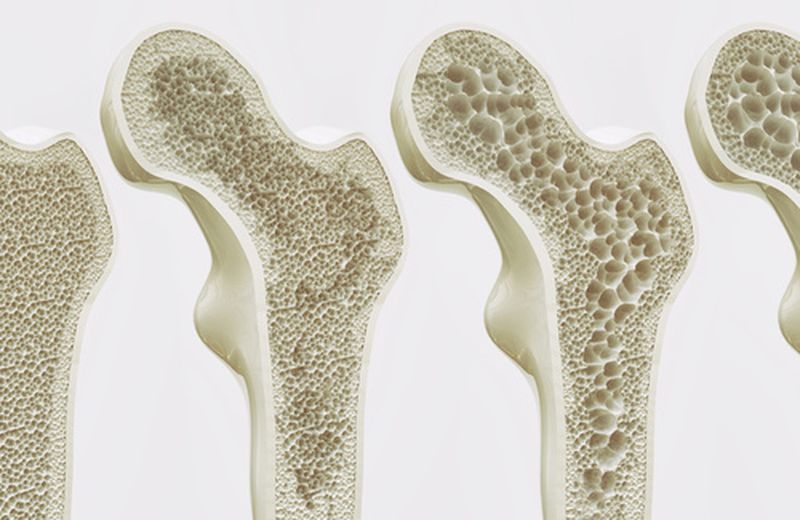Osteoporosis and early symptoms
Osteoporosis is a sadly well-known name to women: it conjures up crutches, pains and broken bones, literally. We can do a lot in terms of prevention and maximum attention at the beginning.

We will need some knowledge of physiology to learn more about osteoporosis . Our body stores most of its calcium in our bones from birth to the end of development , i.e. by the age of 21-22.
The bones “renew” themselves completely in about 6 years and the important thing, after the age of 20, is to prevent the loss of calcium from the bones . In fact, calcium allows the maintenance of the compact texture of the bones and guarantees their strength.
Bones lacking in calcium are fragile and easily break : it is a real disease called osteoporosis. Can we find it he begins , before it’s too late?
Maybe yes, if we learn to recognize the initial symptoms of osteoporosis.
The initial symptoms of osteoporosis
In most cases, osteoporosis is a silent disease , meaning the symptoms appear when you are already in an advanced stage of the disease, with bone fragility such that some bones break. How do we do then?
We can initially consider whether we are more at risk of osteoporosis when:
> We have faced prolonged periods of sedentary lifestyle ;
> there is a genetic predisposition ;
> we have excessive thinness ;
> we often have problems with absorption in the intestine ;
As for the actual symptoms, remember that they can be confused with those relating to other pathologies , here are the main ones:
> kidney stones ;
> diffuse or localized pains: in the neck, knee, hip, back, hand and wrist;
> muscle aches ;
> bone fractures;
> pain in the legs;
> hypercalcemia or high concentration of calcium in the blood;
> posture problems , curvature of the spine.
Read also Tai chi and aging >>
Beyond the symptoms: the diagnosis of osteoporosis
Osteoporosis is diagnosed by the doctor through specific diagnostic tests :
> Computerized Bone Mineralometry or MOC, which evaluates the density of bone mass: it uses X-rays to assess the state of bone mineralization and establishes the degree of osteoporosis or the risk of its occurrence;
> an x- ray examination to assess whether there are recent or previous injuries
> The morphometry of the vertebral column
> Blood and urine tests , which allow to evaluate the state of bone metabolism, can identify possible causative factors.
When the initial symptoms appear: so as not to aggravate osteoporosis
It will be essential to take useful measures to slow down the process and reduce the risk of incurring a fracture.
Some examples of preventive behaviors:
> Correct nutrition and simultaneous regularization of intestinal absorption
> supplementation of calcium and vitamin D
> exercises to increase bone strength and muscle strength
> a possible drug therapy to preserve bone mass or stimulate the formation of new bone tissue, a therapy that will obviously be defined by the treating physician.






























+ There are no comments
Add yours